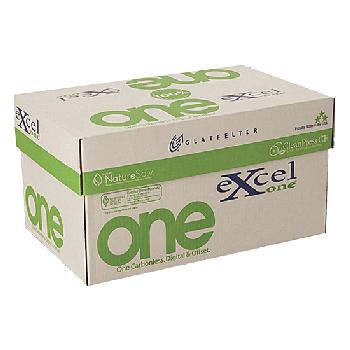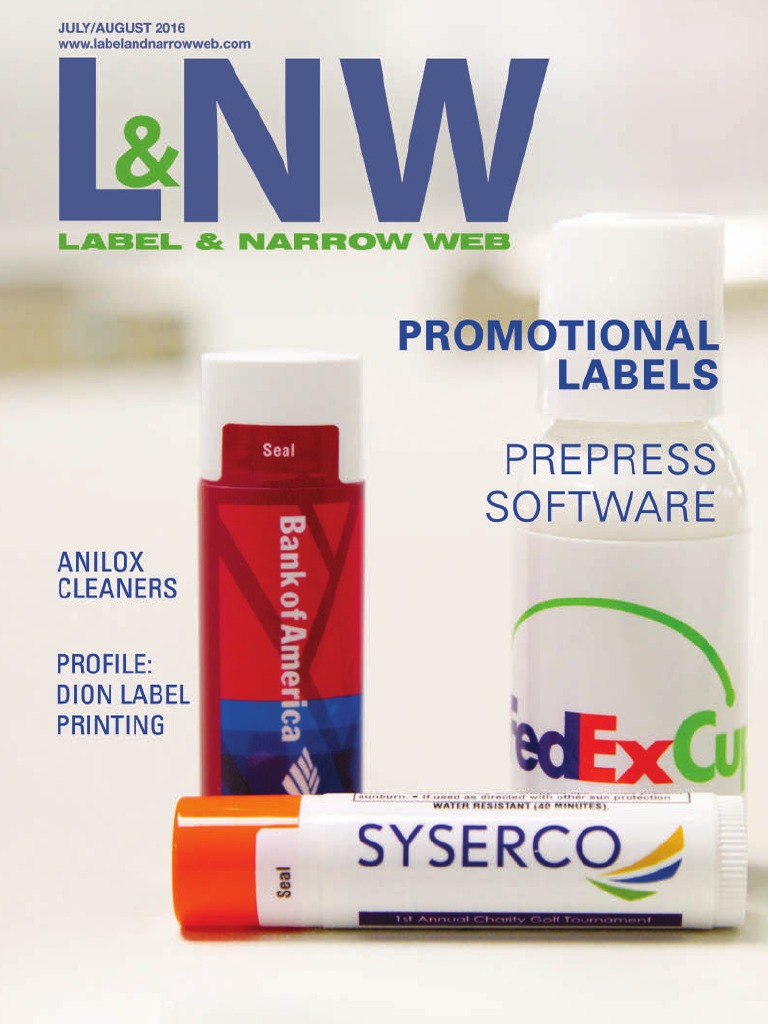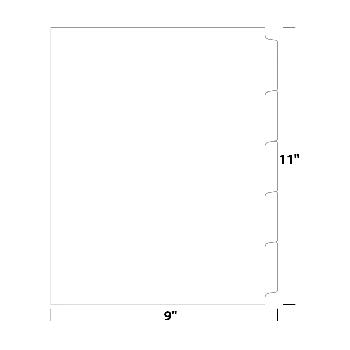- Fasson Fastrack Pressure Sensitive Paper For Sale
- Fasson Fastrack Pressure Sensitive Paper Manufacturers
- Fasson Fastrack Pressure Sensitive Paper Projects
- Fasson Fastrack Pressure Sensitive Paper
- Fasson Fastrack Pressure Sensitive Paper Video
Avery Dennison Advantage Ray Stanton ('Stan') Avery invented the world's first self-adhesive label as a way to merchandise objects. Over the past 85 years, we have grown from one bright idea into a global corporation that continues to advance quality and innovation in materials science. It is essential, as with all pressure-sensitive tapes, that the surface to which the tape is applied be clean, dry, and free of grease or oil. Bond strength is dependent upon the amount of adhesive-to-surface contact developed. Note that different pressure, time and temperature on different (film / rigid) surface achieves different.
- We have paper and ink here - make a start now if you have not already. Make a study of sth. Make a virtue of necessity But Simon does not merely make a virtue of necessity. But since response from ministers by the 1840s was extremely circumspect the reformers were probably making a virtue of necessity. Make a virtue of sth. Make a/the difference.
- Fasson pressure-sensitive has a clear advantage over traditional materials. They provide more brand building and creative freedom, while blending attractively with the substrate, to enhance product image and raise consumer awareness and ultimately, boosting sales. Combined with the brand building capabilities of high-end.
Pressure-sensitive adhesive (PSA, self-adhesive, self-stick adhesive) is a type of non reactive adhesive which forms a bond when pressure is applied to bond the adhesive with a surface. No solvent, water, or heat is needed to activate the adhesive.It is used in pressure-sensitive tapes, labels, glue dots, note pads, automobile trim, and a wide variety of other products.
As the name 'pressure-sensitive' indicates, the degree of bond is influenced by the amount of pressure which is used to apply the adhesive to the surface.
Surface factors such as smoothness, surface energy, removal of contaminants, etc. are also important to proper bonding.
Fasson Fastrack Pressure Sensitive Paper For Sale
PSAs are usually designed to form a bond and hold properly at room temperatures. PSAs typically reduce or lose their tack at low temperatures and reduce their shear holding ability at high temperatures; special adhesives are made to function at high or low temperatures.
Structural and pressure-sensitive adhesives[edit]
Adhesives may be broadly divided in two classes: structural and pressure-sensitive. To form a permanent bond, structural adhesives harden via processes such as evaporation of solvent (for example, white glue), reaction with UV radiation (as in dental adhesives), chemical reaction (such as two part epoxy), or cooling (as in hot melt). In contrast, pressure-sensitive adhesives (PSAs) form a bond simply by the application of light pressure to marry the adhesive with the adherend.
Pressure-sensitive adhesives are designed with a balance between flow and resistance to flow. The bond forms because the adhesive is soft enough to flow, or wet, the adherend. The bond has strength because the adhesive is hard enough to resist flow when stress is applied to the bond. Once the adhesive and the adherend are in proximity, there are also molecular interactions such as van der Waals forces involved in the bond, which contribute significantly to the ultimate bond strength. PSAs exhibit viscoelastic (viscous and elastic) properties, both of which are used for proper bonding.
In contrast with structural adhesives, whose strength is evaluated as lap shear strength, pressure-sensitive adhesives are characterized by their shear and peel resistance as well as their initial tack. These properties are dependent, among other things, on the formulation, coating thickness, rub-down and temperature.
'Permanent' pressure-sensitive adhesives are initially pressure-sensitive and removable (for example to recover mislabeled goods) but after hours or days change their properties, by becoming less or not viscous, or by increasing the bond strength, so that the bond becomes permanent.[citation needed]
Effects of shape[edit]
The adhesive bonding of a tape or label can be affected by its shape. Tapes with pointed corners start to detach at those corners;[1] adhesive strength can be improved by rounding the corners.[2]

Applications[edit]
Pressure-sensitive adhesives are designed for either permanent or removable applications. Examples of permanent applications include safety labels for power equipment, foil tape for HVAC duct work, automotive interior trim assembly, and sound/vibration damping films. Some high performance permanent PSAs exhibit high adhesion values and can support kilograms of weight per square centimeter of contact area, even at elevated temperature.[citation needed] These build adhesion to a permanent bond after several hours or days.
Removal[edit]
Removable adhesives are designed to form a temporary bond, and ideally can be removed after months or years without leaving residue on the adherend. Removable adhesives are used in applications such as surface protection films, masking tapes, bookmark and note papers, price marking labels, promotional graphics materials, and for skin contact (wound care dressings, EKG electrodes, athletic tape, analgesic and transdermal drug patches, etc.). Some removable adhesives are designed to repeatedly stick and unstick. They have low adhesion and generally cannot support much weight.


Sometimes clean removal of pressure sensitive tape can be difficult without damaging the substrate that it is adhered to. Pulling at a slow rate and with a low angle of peel helps reduce surface damage. PSA residue can be softened with certain organic solvents or heat. Extreme cold (dry ice, freeze spray, etc.) can cause viscoelastic materials to change to a glass phase; thus it is useful for removing many types of PSAs. [3]
Manufacture[edit]
Pressure-sensitive adhesives are manufactured with either a liquid carrier or in 100% solid form. Articles such as tapes and labels are made from liquid PSAs by coating the adhesive on a support and evaporating the organic solvent or water carrier, usually in a hot air dryer. The dry adhesive may be further heated to initiate a cross-linking reaction and increase molecular weight. Autocad 2017 download full version. 100% solid PSAs may be low viscosity polymers that are coated and then reacted with radiation to increase molecular weight and form the adhesive (radiation cured PSA); or they may be high-viscosity materials that are heated to reduce viscosity enough to allow coating, and then cooled to their final form (hot melt PSA, HMPSA).
Gta san andreas size for pc. GTA has spawned a plethora of games for PC, and their next installment is expected to release in the coming years. The last game of the GTA franchise, GTA 5, had a massive size of 94 GB.
Composition[edit]
PSAs are usually based on an elastomer compounded with a suitable tackifier (e.g., a rosinester). The elastomers can be based on acrylics, which can have sufficient tack on their own and do not require a tackifier.; bio-based acrylate – recently, a biological-based macromonomer was grafted onto a backbone of acrylate so that the resulting PSA uses 60% bio-based materials,[4]butyl rubber, ethylene-vinyl acetate (EVA) with high vinyl acetate content; can be formulated as a hot-melt PSA, natural rubber, nitriles, silicone rubbers, requiring special tackifiers based on 'MQ' silicate resins, composed of a monofunctional trimethyl silane ('M') reacted with quadrafunctional silicon tetrachloride ('Q').
Styreneblock copolymers (SBC), also called styrene copolymer adhesives and rubber-based adhesives, have good low-temperature flexibility, high elongation, and high heat resistance. They are frequently used in hot melt adhesive applications, where the composition retains tack even when solidified; however non-pressure-sensitive formulations are also used. High heat resistance, good low-temperature flexibility.[5] Lower strength than polyesters. They usually have A-B-A structure, with an elastic rubber segment between two rigid plastic endblocks. High-strength film formers as standalone, increase cohesion and viscosity as an additive. Water-resistant, soluble in some organic solvents; cross-linking improves solvent resistance. Resins associating with endblocks (cumarone-indene, α-methyl styrene, vinyl toluene, aromatic hydrocarbons, etc.) improve adhesion and alter viscosity. Resins associating to the midblocks (aliphatic olefins, rosin esters, polyterpenes, terpene phenolics) improve adhesion, processing and pressure-sensitive properties. Addition of plasticizers reduces cost, improves pressure-sensitive tack, decrease melt viscosity, decrease hardness, and improve low-temperature flexibility. The A-B-A structure promotes a phase separation of the polymer, binding together the endblocks, with the central elastic parts acting as cross-links; SBCs do not require additional cross-linking,[6] styrene-butadiene-styrene (SBS), used in high-strength PSA applications styrene-ethylene/butylene-styrene (SEBS), used in low self-adhering non-woven applications, styrene-ethylene/propylene (SEP), styrene-isoprene-styrene (SIS), used in low-viscosity high-tack PSA applications, vinyl ethers.
See also[edit]
References[edit]
- ^Popov, Valentin L.; Pohrt, Roman; Li, Qiang (2017-09-01). 'Strength of adhesive contacts: Influence of contact geometry and material gradients'. Friction. 5 (3): 308–325. doi:10.1007/s40544-017-0177-3. ISSN2223-7690.
- ^Friction Physics (2017-12-06), Science friction: Adhesion of complex shapes, retrieved 2018-01-02
- ^US5,798,169, Smith, 'SELF. CONTAINING TAMPER EVIDENT SEAL', published 1998
- ^'Bio-based PSA'.
- ^Liesl K. Massey (1 January 2003). Permeability Properties of Plastics and Elastomers, 2nd Ed.: A Guide to Packaging and Barrier Materials. William Andrew. pp. 582–. ISBN978-0-8155-1851-8.
- ^Mark, James E. (21 March 2007). Physical Properties of Polymers Handbook. Springer Science & Business Media. ISBN9780387690025 – via Google Books.
Further reading[edit]

Applications[edit]
Pressure-sensitive adhesives are designed for either permanent or removable applications. Examples of permanent applications include safety labels for power equipment, foil tape for HVAC duct work, automotive interior trim assembly, and sound/vibration damping films. Some high performance permanent PSAs exhibit high adhesion values and can support kilograms of weight per square centimeter of contact area, even at elevated temperature.[citation needed] These build adhesion to a permanent bond after several hours or days.
Removal[edit]
Removable adhesives are designed to form a temporary bond, and ideally can be removed after months or years without leaving residue on the adherend. Removable adhesives are used in applications such as surface protection films, masking tapes, bookmark and note papers, price marking labels, promotional graphics materials, and for skin contact (wound care dressings, EKG electrodes, athletic tape, analgesic and transdermal drug patches, etc.). Some removable adhesives are designed to repeatedly stick and unstick. They have low adhesion and generally cannot support much weight.
Sometimes clean removal of pressure sensitive tape can be difficult without damaging the substrate that it is adhered to. Pulling at a slow rate and with a low angle of peel helps reduce surface damage. PSA residue can be softened with certain organic solvents or heat. Extreme cold (dry ice, freeze spray, etc.) can cause viscoelastic materials to change to a glass phase; thus it is useful for removing many types of PSAs. [3]
Manufacture[edit]
Pressure-sensitive adhesives are manufactured with either a liquid carrier or in 100% solid form. Articles such as tapes and labels are made from liquid PSAs by coating the adhesive on a support and evaporating the organic solvent or water carrier, usually in a hot air dryer. The dry adhesive may be further heated to initiate a cross-linking reaction and increase molecular weight. Autocad 2017 download full version. 100% solid PSAs may be low viscosity polymers that are coated and then reacted with radiation to increase molecular weight and form the adhesive (radiation cured PSA); or they may be high-viscosity materials that are heated to reduce viscosity enough to allow coating, and then cooled to their final form (hot melt PSA, HMPSA).
Gta san andreas size for pc. GTA has spawned a plethora of games for PC, and their next installment is expected to release in the coming years. The last game of the GTA franchise, GTA 5, had a massive size of 94 GB.
Composition[edit]
PSAs are usually based on an elastomer compounded with a suitable tackifier (e.g., a rosinester). The elastomers can be based on acrylics, which can have sufficient tack on their own and do not require a tackifier.; bio-based acrylate – recently, a biological-based macromonomer was grafted onto a backbone of acrylate so that the resulting PSA uses 60% bio-based materials,[4]butyl rubber, ethylene-vinyl acetate (EVA) with high vinyl acetate content; can be formulated as a hot-melt PSA, natural rubber, nitriles, silicone rubbers, requiring special tackifiers based on 'MQ' silicate resins, composed of a monofunctional trimethyl silane ('M') reacted with quadrafunctional silicon tetrachloride ('Q').
Styreneblock copolymers (SBC), also called styrene copolymer adhesives and rubber-based adhesives, have good low-temperature flexibility, high elongation, and high heat resistance. They are frequently used in hot melt adhesive applications, where the composition retains tack even when solidified; however non-pressure-sensitive formulations are also used. High heat resistance, good low-temperature flexibility.[5] Lower strength than polyesters. They usually have A-B-A structure, with an elastic rubber segment between two rigid plastic endblocks. High-strength film formers as standalone, increase cohesion and viscosity as an additive. Water-resistant, soluble in some organic solvents; cross-linking improves solvent resistance. Resins associating with endblocks (cumarone-indene, α-methyl styrene, vinyl toluene, aromatic hydrocarbons, etc.) improve adhesion and alter viscosity. Resins associating to the midblocks (aliphatic olefins, rosin esters, polyterpenes, terpene phenolics) improve adhesion, processing and pressure-sensitive properties. Addition of plasticizers reduces cost, improves pressure-sensitive tack, decrease melt viscosity, decrease hardness, and improve low-temperature flexibility. The A-B-A structure promotes a phase separation of the polymer, binding together the endblocks, with the central elastic parts acting as cross-links; SBCs do not require additional cross-linking,[6] styrene-butadiene-styrene (SBS), used in high-strength PSA applications styrene-ethylene/butylene-styrene (SEBS), used in low self-adhering non-woven applications, styrene-ethylene/propylene (SEP), styrene-isoprene-styrene (SIS), used in low-viscosity high-tack PSA applications, vinyl ethers.
See also[edit]
References[edit]
- ^Popov, Valentin L.; Pohrt, Roman; Li, Qiang (2017-09-01). 'Strength of adhesive contacts: Influence of contact geometry and material gradients'. Friction. 5 (3): 308–325. doi:10.1007/s40544-017-0177-3. ISSN2223-7690.
- ^Friction Physics (2017-12-06), Science friction: Adhesion of complex shapes, retrieved 2018-01-02
- ^US5,798,169, Smith, 'SELF. CONTAINING TAMPER EVIDENT SEAL', published 1998
- ^'Bio-based PSA'.
- ^Liesl K. Massey (1 January 2003). Permeability Properties of Plastics and Elastomers, 2nd Ed.: A Guide to Packaging and Barrier Materials. William Andrew. pp. 582–. ISBN978-0-8155-1851-8.
- ^Mark, James E. (21 March 2007). Physical Properties of Polymers Handbook. Springer Science & Business Media. ISBN9780387690025 – via Google Books.
Further reading[edit]
Fasson Fastrack Pressure Sensitive Paper Manufacturers
- 'Pressure-Sensitive Adhesives and Applications', Istvan Benedek, 2004, ISBN0-8247-5059-4
- 'Pressure Sensitive Adhesive Tapes', J. Johnston, PSTC, 2003, ISBN0-9728001-0-7
- 'Pressure Sensitive Formulation', I. Benedek, VSP, 2000, ISBN90-6764-330-0
Permanent & Removable Pressure-Sensitive Adhesives
- Published: August 01, 2003, By David J. Bentley Jr., RBS Technologies
An intriguing aspect of pressure-sensitive adhesives is the wide variety available. They come in different forms for application as solutions in solvent, as dispersions or emulsions in water, and as 100% solids materials such as hot melt adhesives. They can use various polymers such as rubbers, acrylates, etc., to give them different performance characteristics. They might have high tack or low tack. They can provide high cohesive strength with low adhesive strength or low cohesive strength with high adhesive strength.
Another interesting characteristic is they can be permanent or removable. This is perhaps a feature of pressure-sensitive adhesives that not only contributes to their versatility but also complicates their use. A permanent pressure-sensitive adhesive destroys the substrate with attempts to remove it. A typical application is a label indicating the selling price for an item. A removable pressure-sensitive adhesive removes cleanly from the substrate. An example is a name tag applied at a party for identification.
Most people in the converting industry know suppliers offer both types of products. The manufacturer selects different ingredients to make the adhesive aggressive or non-aggressive.
Another factor that is less appreciated but equally important in the manufacture of a product using a pressure-sensitive adhesive is the substrate being used. Autocad crack.
A permanent pressure-sensitive adhesive relies on poor internal strength of the substrate to which it is applied. As expected, a removable pressure-sensitive adhesive requires good internal strength of the substrate.
Fasson Fastrack Pressure Sensitive Paper Projects
Hidden between the two previous statements is the fact that a product sold as a permanent pressure-sensitive actually could be a removable product depending on the substrate being used and vice versa.
Consider an example: A converter purchases a product labeled as a permanent pressure-sensitive adhesive and coats it onto papers for use as labels. When the labels are adhered to something, the aggressive nature of the adhesive is stronger than the internal strength of the paper. Attempts at removal therefore result in tearing of the paper. By definition, this is a permanent pressure-sensitive adhesive.
Suppose the same pressure-sensitive adhesive was coated onto a rather thick polyester film and made into labels. After application of these labels onto something, a person probably could remove them because of the high internal strength of the polyester film. The so-called permanent adhesive now is removable.
Likewise, a removable adhesive on high-internal-strength paper will deliver a product more removable than the same adhesive applied on a low-internal-strength paper. In other words, relying on the manufacturer's definition that pressure-sensitive adhesives are removable or permanent can be somewhat misleading. No pressure-sensitive adhesive truly is removable or permanent in its own right. Rather, a finished product using a pressure-sensitive adhesive applied onto a substrate can be removable or permanent.
The difference is the degree of permanence or ability for removal depend on two factors: the aggressiveness of the adhesive and the internal strength of the substrate to which it is applied. The adhesive manufacturer controls the first factor, but the converter making the label or other pressure-sensitive product controls the second.
Knowing both factors are important components of a finished pressure-sensitive product is necessary to ensure any product labeled permanent or removable will perform as advertised.
Fasson Fastrack Pressure Sensitive Paper
David J. Bentley Jr. is a recognized industry expert in polymers, laminations, and coatings with more than 30 years of experience in R&D and technical service. Contact him at This email address is being protected from spambots. You need JavaScript enabled to view it..
